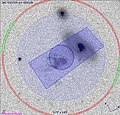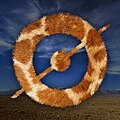| Logo | Project | Type | Description | Launch date | End date |
|---|
 | Solar Stormwatch | Annotation | The project uses data including video imagery from the twin STEREO spacecraft to track the formation and evolution of coronal mass ejections. [63] | 21 Dec 2009 | — |
| AnnoTate | Annotate | Volunteers on Zooniverse can help transcribe/annotate papers from many British artists. This project has over 50,000 documents from the Tate Archive. | 1 Sep 2015 | — |
| Galaxy Zoo Mergers | Pattern matching | Compared images of galaxies discovered by the original Galaxy Zoo to simulations to study the dynamics of interacting galaxies. [64] [65] [66] [67] | 23 Nov 2009 | 25 Jun 2012 |
| Galaxy Zoo Supernovae | Annotation | Used data from the Palomar Transient Factory survey to search for supernovae for quick follow-up study by telescopes around the world. [68] [69] [70] | 13 Aug 2009 | 3 Aug 2012 |
| Ice Hunters | Annotation | Identified Kuiper belt objects (KBOs) for potential future targets for the New Horizons spacecraft. Also identified variable stars and asteroids. It made use of human review of subtracted images from various telescopes. [71] [72] | 21 Jun 2011 | early 2012 |
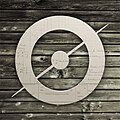 | Old Weather Phases One & Two | Transcription | Between October 2010 and July 2012, some 16,400 volunteers transcribed the weather data from 1,090,745 pages [73] of the log books of World War 1 era Royal Navy ships. The project generated 1.6 million weather observations that will be used to improve climate modelling. [74] [75] | 12 Oct 2010 | 23 Jul 2012 |
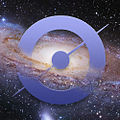 | Andromeda Project | Annotation | Used images from the Hubble Space Telescope to identify star clusters in the Andromeda Galaxy as well as background distant galaxies hidden in the star fields. [76] [77] | 5 Dec 2012 | 30 Oct 2013 |
 | Moon Zoo | Annotation | High-resolution images of the Moon's surface provided by the Lunar Reconnaissance Orbiter are used by volunteers to create detailed crater counts, mapping the variation in age of lunar rocks. [78] [79] | 16 Feb 2009 | Mar 2016 |
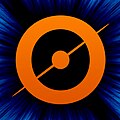 | Space Warps | Annotation | Searched for gravitational lenses created by massive galaxies in distant space. [80] [81] | 8 May 2013 | 2014 |
| Star Date: M83 | Annotation | Described the shapes and colors of star clusters in the Southern Pinwheel Galaxy (M83) using images from the Hubble Space Telescope. [82] | 13 Jan 2014 | 2014 |
 | Whale FM | Pattern matching | Categorized the sounds made by killer whales and followed the travels of individual animals around the oceans. [83] Volunteers heard an audio clip of the whale sounds and viewed the data as a spectrogram. The project was run in conjunction with Scientific American. [84] | 29 Nov 2011 | Mar 2015 |
 | Seafloor Explorer | Filtering | Identified species and ground cover in images of the seafloor to create a library of seafloor habitats. [83] The images were from a robotic camera that mapped the seafloor off the coast of the northeastern United States. [85] | 13 Sep 2012 | |
| Galaxy Zoo: Bar Lengths | Annotation | Identify and measure the bars in spiral galaxies from 8,000 images taken by the Hubble Space Telescope. [86] | 1 July 2015 | — |
|
| Higgs Hunters | Annotation | Uncover the building blocks of the universe. Help search for unknown exotic particles in the Large Hadron Collider data. [87] | 26 Nov 2014 | — |
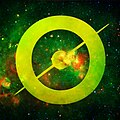 | The Milky Way Project | Annotation | Detecting bubbles in the interstellar medium which indicate regions where the early stages of star formation are taking place. The project uses infrared images from the Spitzer Space Telescope, as well as sub-millimetre data from Herschel. [88] [89] | 7 Dec 2010 | — |
| Mutual Muses | Annotate | Users can help transcribe letters between Lawrence Alloway and Sylvia Sleigh. Users transcribe one page at a time. | 1 Aug 2017 | |
 | Parochial Archive Project in Rome | Annotate | Users can help transcribe documents from various Roman parochial sources dating back to the 16th and 17th century. Users transcribe one folio at a time. | 12 Dec 2017 | |
| Shakespeare's World | Annotate | Users help annotate and transcribe many documents from William Shakespeare's time. This project helps users and Oxford learn what life was like for Shakespeare and his comrades. | 10 Dec 2015 | - |
 | Disk Detective | Filtering | Identify dusty debris disks in the Milky Way galaxy that indicate stars in the process of forming planetary systems. Images come from NASA's WISE telescope, as well as the DSS2 and 2MASS surveys. [90] | 30 Jan 2014 | — |
 | Old Weather | Transcription | Zooites use a special interface to digitally transcribe weather and sea ice data from the log books of United States Arctic exploration and research ships, that were at sea between 1850 and 1950. [91] The current data is the third phase of the project. | 12 Oct 2010 | — |
| Cyclone Center | Decision tree | Classifying tropical cyclones by using a modified version of the Dvorak Technique. Volunteers are shown a series of images from infrared sensors on weather satellites and asked a number of questions to identify the type and strength of the storm. [83] [92] | 27 Sep 2012 | — |
| Bat Detective | Pattern matching | Monitor the status of bat populations by classifying the sounds they make for echolocation and social purposes. [93] The data are originally recorded using ultrasonic microphones; calls are played back at a slower speed within the range of human hearing; data are also shown visually in the form of a spectrogram. [94] | 1 Oct 2012 | — |
 | Plankton Portal | Filtering | Classifying plankton from images gathered by the In Situ Ichthyoplankton Imaging System to understand how plankton types are distributed at a variety of ocean depths. The information can be used to map oceanic carbon dioxide levels, as plankton provide a valid indicator. [95] [96] [97] | 27 Sep 2013 | — |
 | Condor Watch | Annotation | Examine motion-capture images from Pinnacles National Park in northern California. Volunteers identify California condors and mark the distance to feeding sources such as animal carcasses. [98] | 15 Apr 2014 | — |
| Orchid Observers | Transcription | Photograph wild orchids throughout the summer of 2015 and/or annotate images and transcribe data from the orchid collection of the Natural History Museum, London. [99] | 23 Apr 2015 | — |
| Jungle Rhythms | Transcription | Transcribe hand-drawn observations, made between 1937 and 1958, of life cycle events for over 2,000 trees in the tropical forests of the Democratic Republic of the Congo. [100] | February 2016 | — |
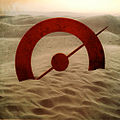 | Ancient Lives | Transcription | Transcribing texts in Greek from the Oxyrhynchus Papyri. The papyri belong to the Egypt Exploration Society and their texts will eventually be published and numbered in Society's Greco-Roman Memoirs series. [101] [102] [103] [104] | 26 Jul 2011 | — |
 | Operation War Diary | Transcription | Transcribe British war diaries from World War I, helping historians to track troop movements, add to catalogue metadata, and delve into individual experiences of soldiers. [105] [106] | 14 Jan 2014 | — |
| Science Gossip | Annotation | Classify illustrations from the pages of early science journals and periodicals digitized by the Biodiversity Heritage Library. [107] | 2015 | — |
| Cell Slider | Annotation | Using images from Cancer Research UK volunteers help to classify archived cancer samples. [108] [109] | 24 Oct 2012 | — |
 | Worm Watch Lab | Annotation | Watch videos of nematode worms to collect genetic data that will assist medical research. [110] [111] The classifications offer data to researchers on brain and gene function. [112] The nematode species studied is Caenorhabditis elegans . [113] | 3 Jul 2013 | — |
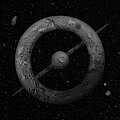 | Asteroid Zoo | Annotation | Examine sets of time-lapsed images to search for moving objects that could be undiscovered asteroids. Data comes from the Catalina Sky Survey telescopes in Arizona. The project is run in conjunction with Planetary Resources, which is focused on developing technology for asteroid mining. [114] | 24 Jun 2014 | — |
 | Radio Galaxy Zoo | Annotation | Identify radio-wavelength images of astrophysical jets in galaxies that are powered by accretion onto a black hole. The task is to correctly associate any radio components with an infrared image of the black hole's host galaxy. [115] | 17 Dec 2013 | — |
 | Sunspotter | Ranking | Examine images of sunspots and rank pairs of images according to their relative complexity. The science goal is to examine how the complexity of sunspots evolves over time and how they produce eruptions. Data for the project comes from the Michelson Doppler Instrument aboard the SOHO spacecraft. [116] [117] | 27 Feb 2014 | — |
| SETILive | Annotation | SETILive was a project which attempted to use humans to identify potential signals from intelligent extraterrestrial life which may be missed by computer algorithms. [118] The data came from radio observations by the Allen Telescope Array of stars in the Kepler field of view. [119] | 29 Feb 2012 | 12 Oct 2014 |
| Health Record Hiccups | Pattern matching | Used human pattern-spotting skills to identify sudden, unexpected changes in 7959 electronic health records for temporal data quality issues caused by "infrastructure" changes. [120] [121] | 2 Sep 2020 | 23 Oct 2020 |






